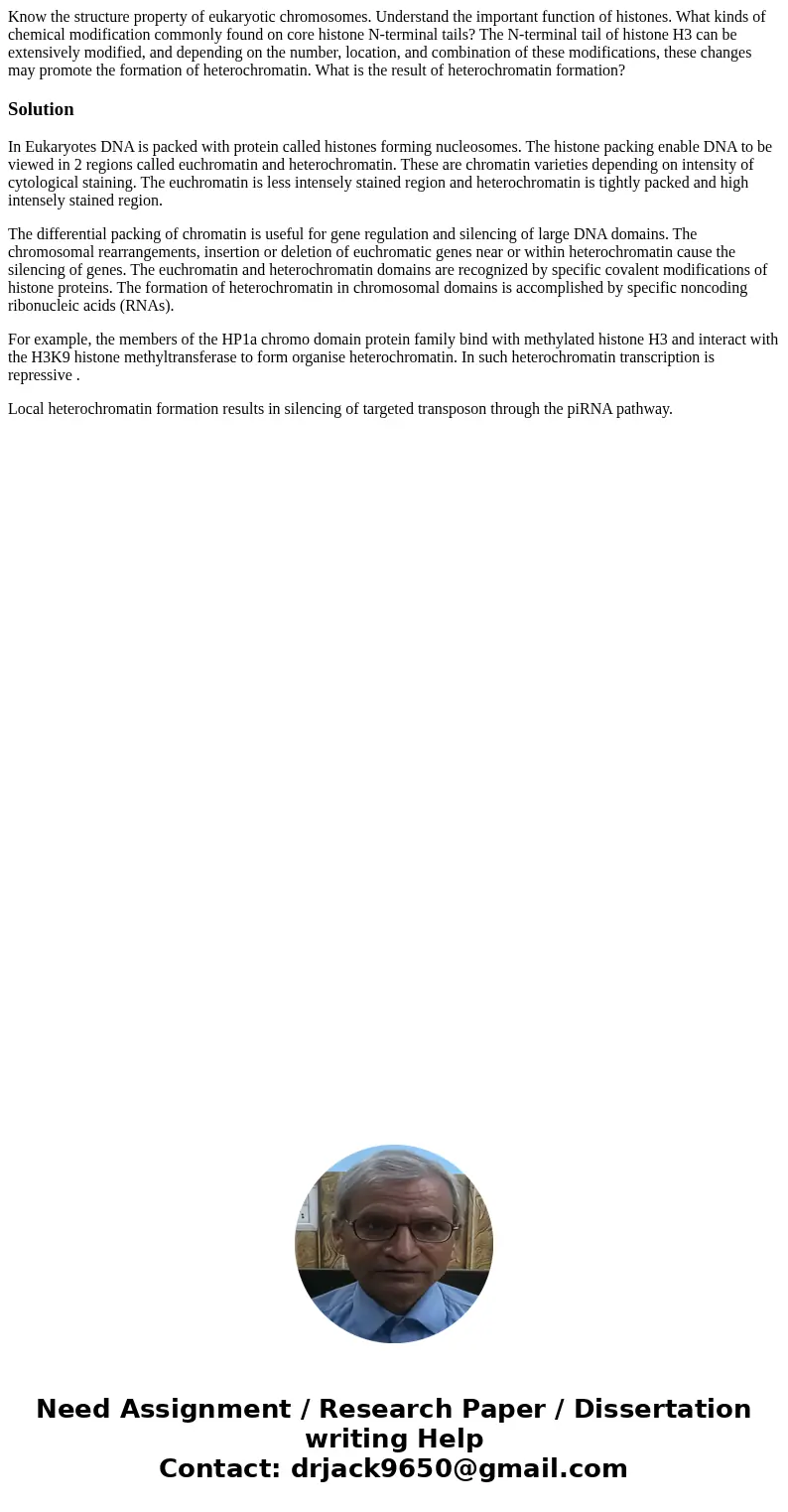Know the structure property of eukaryotic chromosomes Unders
Solution
In Eukaryotes DNA is packed with protein called histones forming nucleosomes. The histone packing enable DNA to be viewed in 2 regions called euchromatin and heterochromatin. These are chromatin varieties depending on intensity of cytological staining. The euchromatin is less intensely stained region and heterochromatin is tightly packed and high intensely stained region.
The differential packing of chromatin is useful for gene regulation and silencing of large DNA domains. The chromosomal rearrangements, insertion or deletion of euchromatic genes near or within heterochromatin cause the silencing of genes. The euchromatin and heterochromatin domains are recognized by specific covalent modifications of histone proteins. The formation of heterochromatin in chromosomal domains is accomplished by specific noncoding ribonucleic acids (RNAs).
For example, the members of the HP1a chromo domain protein family bind with methylated histone H3 and interact with the H3K9 histone methyltransferase to form organise heterochromatin. In such heterochromatin transcription is repressive .
Local heterochromatin formation results in silencing of targeted transposon through the piRNA pathway.

 Homework Sourse
Homework Sourse